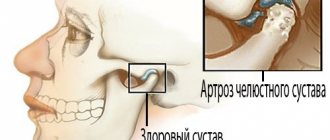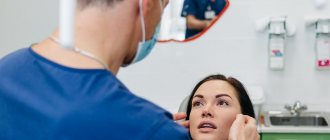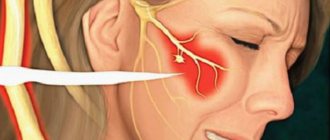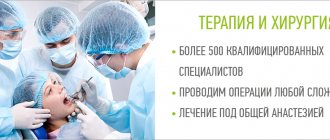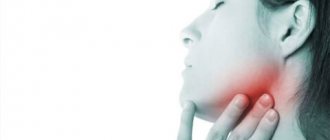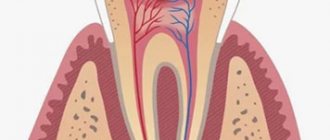The clinic of orthodontics, gnathology, and aesthetic dentistry MY ORT offers treatment for arthritis of the temporomandibular joint. This disease is rare, but requires timely attention from a specialist to avoid serious complications.
Arthritis of the TMJ, depending on the causes, is divided into three types:
- The infectious form is a consequence of a previous disease or inflammatory process. The main causes are previous tuberculosis, syphilis, gonorrhea, diseases of a rheumatological nature.
- The dystrophic form appears with constant heavy loads on the joint area. Such regular exposure causes tissue changes and causes illness.
- Traumatic arthritis develops against the background of a severe bruise or injury. The danger of this form is that the Patient does not immediately understand the development of the problem. After a bruise, pain and swelling are observed. But it is precisely these symptoms that indicate the development of damage to the joint area, which many patients mistakenly do not pay attention to.
According to the method of infection penetration into the blood, arthritis is divided into hematogenous, contact, and direct. In hematogenous infection, pathogenic bacteria enter the body through the blood. In the second method, the source of infection becomes inflammatory processes in the lower jaw, middle ear or salivary gland. With timely treatment, complications rarely develop. But with a chronic form or lack of therapy, there is a high risk of developing arthritis. The direct method involves injuries or complications that develop after surgical operations.
Symptoms and causes of TMJ arthritis, classification
The main symptoms of temporomandibular joint arthritis are:
- pain in the affected area, it is excruciating, acute, aggravated by exercise and movement;
- jaw mobility is limited, opening or closing the mouth is problematic;
- swelling appears around the sore spot;
- pronounced hyperemia.
The pain intensifies when opening the mouth, talking, chewing and other stress. Typically, greater discomfort is felt in the first half of the day, and by evening the pain subsides. But stiffness and difficulty opening the mouth remain. One of the characteristic signs is distortion when trying to open the mouth wide.
As the situation worsens, pulsation appears in the affected area. Acute arthritis of the temporomandibular joint is characterized by symptoms such as redness and swelling, fever, and suppuration. General health worsens, fatigue appears, and appetite decreases.
The main causes of the disease are:
- otitis media;
- flu;
- tonsillitis;
- infectious lesion of the temporal bone tissue;
- angina;
- osteomyelitis of the jaw;
- phlegmon of fatty tissue of the parotid-masticatory zone;
- mastoiditis of bone and mucous tissue.
The causes of the reactive form are rubella, chlamydia, enteritis, and viral hepatitis. Often the problem develops against the background of meningococcal infection. However, pathogenic microorganisms do not penetrate into the cavity; they only cause inflammation.
Self-help methods for diseases of the temporomandibular joint:
The following self-help methods may provide temporary pain relief:
- Moist Heat: Compressing with a hot pack or bottle wrapped in a warm, damp towel can improve chewing function and reduce pain. Be careful to avoid burns when using high temperature.
- Ice: Ice packs can reduce inflammation, numb pain, and promote healing. Do not place the ice pack directly on your skin. When using, wrap the bag with a clean cloth. Do not use the ice pack for more than 10-15 minutes.
- Diet - Soft Foods: Soft or mixed foods allow the jaw to rest temporarily. Remember to avoid hard, crunchy, and chewy* foods. Do not stretch your mouth when trying to bite off large pieces or the whole fruit.
- Over-the-counter analgesics: Over-the-counter (over-the-counter) analgesics are useful for temporarily reducing pain. Together with your doctor, carefully read the instructions for each medication before using it.
- Lower jaw exercises: Slow, gentle exercises of the lower jaw can help increase jaw mobility. Your doctor or physical therapist can evaluate your condition and suggest appropriate exercises based on your individual needs.
- Relaxation techniques (relaxation techniques): Relaxation can help combat the pain that accompanies TMJ dysfunction. Deep, slow breathing increases relaxation and reduces pain sensitivity.
If you find an error, please select a piece of text and hold LEFT Ctrl and press Enter.
You can send no more than 5 messages in 30 minutes!
Liked? Tell your friends!
Diagnosis and treatment methods
Inflammatory processes of the TMJ can be diagnosed in the early stages, but this requires timely treatment. Initially, the lesion is localized in the capsule, but as the problem progresses, it spreads to the surrounding tissues. If left untreated, joint mobility may be completely lost.
Diagnosis is made during the initial visit to the dentist. Additionally, consultations with a traumatologist, otolaryngologist, infectious disease specialist and other specialists may be required. The basic methods are CT, radiography, CBCT. Using an x-ray, the dentist is able to determine the presence of arthritis, widening or narrowing of the joint gap. The following types of examinations are also carried out:
- Schüller and Bordes techniques for lateral examination of the affected area;
- plain radiographs;
- layered tomography;
- zonography;
- contrast arthrography;
- magnetic resonance imaging;
- diagnostics ELISA (enzyme-linked immunosorbent assay);
- PCR study.
Treatment begins with analyzing the data obtained and drawing up a treatment regimen. The jaw is immobilized and the affected organ is kept at rest for 2-3 days. If necessary, a sling bandage, splint or interdental plate is applied. The patient should follow a semi-liquid diet, relieving tension on the joint. The treatment regimen depends on the form and degree of the lesion; physiotherapy and myogymnastics are usually prescribed.
In the acute form, injections of antibiotics, corticosteroids, and chondroprotectors are prescribed. In case of purulent form, surgical intervention, opening of the cavity, and drainage through an external incision are indicated. Chronic arthritis requires the use of physiotherapy methods, sanitation of the oral cavity and nasopharynx. In some cases, dental prosthetics are indicated.
Pathogenesis
The study of the mechanisms of development of pathology allowed us to come to conclusions about their progression associated with a lack of physiological endurance of the joint.
The resulting injuries and the appearance of inflammation lead to improper distribution or excessive load on the tissue, which causes disruption of the synchronization of the joints, causing loss of functionality of the muscular system. The result of the development of such unpleasant processes is a disruption of the nutrition of cartilage tissue, as well as a gradual loss of their elasticity, which inevitably leads to destruction.
Simultaneously with all of the above, serious transformations of bone tissue develop, which provokes the formation of growths that modify the elements of the joint: the head of the lower jaw changes shape, and signs of osteoporosis are visible.
As a result of the uncontrolled course of pathological processes, severe deformation and serious disruption of the tissue structure occur.
Predictions and prevention
The disease is serious and requires timely consultation with a specialist. In infectious and acute forms, the prognosis is favorable, but only if all treatment conditions are met. The chronic form, even with treatment and compliance with recommendations, often develops into bone ankylosis. In this case, surgical intervention is indicated, since the problem cannot be eliminated by other means.
At risk are patients with rheumatoid arthritis, rheumatism, and people with jaw injuries. For prevention, it is recommended to carry out timely sanitation of purulent foci, if present, to protect against repeated injuries. It is necessary to monitor your health and treat developing specific infections. The following situations should also be avoided:
- physical exercise;
- bad habits that load the jaw, for example, it is forbidden to chew seeds and nuts;
- stress;
- bruxism;
- breathing through the mouth (you need to try more with your nose).
Complexes of therapeutic exercises and massages are performed independently or in the office. This allows you to strengthen muscle tone, improve jaw mobility, and eliminate crunching when moving. In addition, such measures speed up the recovery process.
About Us
The MY ORT clinic offers treatment for diseases of the jaw, including acute or chronic arthritis of the temporomandibular joint. We offer our patients the following benefits:
- modern methods of therapy;
- use of certified materials;
- full range of services, including diagnostics;
- control of treatment, guarantee of results;
- attentive attitude towards everyone, creation of comfortable conditions;
- affordable prices.
You can make an appointment or consult with our specialists by phone. Leave a request on the website, choose a convenient time to visit or send a request by email
The most likely causes of arthrosis of the jaw joint
Before trying to determine the causes of arthrosis of the jaw joint, it is necessary to understand that the pathology is primarily multifactorial, which makes it likely that several prerequisites for its development exist at once.
The group of common causes of arthrosis of the jaw joint usually includes genetic factors and various diseases. Among the local ones there are:
- the presence of a chronic form of arthritis;
- partial absence of molars;
- pathologies of dental tissues (abrasion, etc.);
- violation of prosthetic technology/placement of fillings, especially on chewing surfaces;
- injuries and surgical interventions.
In addition, it is worth noting that among women, the risks of the causes of arthrosis of the jaw joint include a natural decrease and instability of hormonal levels, on which the effectiveness of metabolic processes occurring in tissues largely depends.
A combination of factors provokes difficulties in treatment.
Symptoms of arthrosis of the jaw joint
Considering the etiology, it is worth noting that the development of the disease is gradual. Symptomatic signs begin to appear slightly, and therefore the patient cannot always independently notice what is happening.
The initial symptoms of arthrosis of the jaw joint are clicking, extraneous crunching, and stiffness. Subsequently, during exertion (chewing food or talking), dull pain begins to appear, which can develop into other pathologies (for example, synovitis).
After the first months of symptoms of arthrosis of the jaw joint, a limitation in the mobility of the lower jaw becomes noticeable. Not only stiffness is observed, but also a displacement of the lower jaw to the affected side with a visually noticeable asymmetry of the face.
It is assumed that symptoms may also include: numbness, tingling of the skin, hearing loss, and even headaches or eye pain.
Features of treatment for older patients
Among the common age-related changes in the lower jaw, changes in the content of water, organic and inorganic substances are noted, osteoporosis, atrophy and thinning of bone tissue are often detected. In addition, older patients often have concomitant diseases, such as diabetes. All of these factors can greatly limit treatment options. For example, if dentures are required, then in some situations the dentist may only offer removable dentures. Placing implants will be risky and ineffective.
Nevertheless, modern dental capabilities make it possible to find a way out of any, even the most difficult situation. A wide variety of materials and techniques can eliminate existing problems and significantly improve the patient’s quality of life.
Classification of acute periostitis
In the classification of acute periostitis, the following points should be highlighted. These are the causes of acute periostitis:
- odontogenic periostitis;
- lymphatic periostitis;
- hematogenous periostitis;
- traumatic periostitis;
Course of acute periostitis:
- serous periostitis of the jaws;
- purulent periostitis of the jaws.
Process distribution:
- limited periostitis of the jaws;
- diffuse periostitis of the jaws.
Treatment at home with folk remedies
In addition to effective therapeutic procedures and conservative methods using medications, doctors have recently recommended using traditional recipes in combination. They can be prepared at home.
For indoor use
For internal use, medications are prescribed in the form of tinctures and decoctions to reduce pain. The most effective recipes are:
- combination of honey with garlic and cranberries. To do this, you need to chop the garlic (200 g), grate the cranberries (500 g) and add one kilogram of honey. The product is used before meals several times a day;
- apple cider vinegar with water. The solution is drunk for two months, for which 100 ml is required. dilute water with 2 tbsp. vinegar. The course is held several times throughout the year. Treatment with folk remedies helps speed up recovery.
External means
External remedies are lotions, compresses, ointments. They help relieve pain, inflammation, and redness. Their effectiveness is that there are no side effects. The most effective are baths with infusions of mustard, mint and burdock.
They should be taken every day for 20 minutes. Other means recommended by the doctor are also used. If, for example, there is no purulent exudate , the joints are warmed up with salt and hot clean sand.
more about how to treat impingement syndrome here.
Doctors do not recommend using folk remedies if pain and problems do not disappear after a certain time. It is necessary to seek help from a clinic and undergo conservative treatment.
